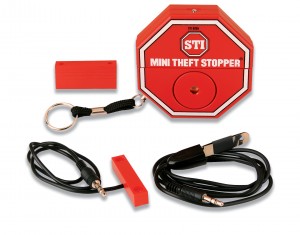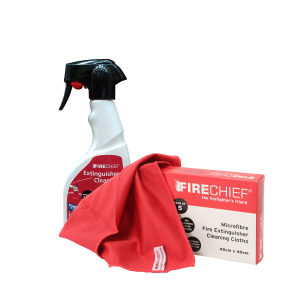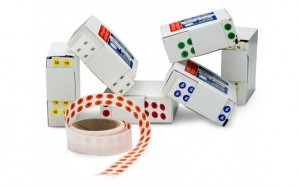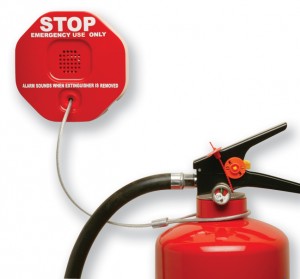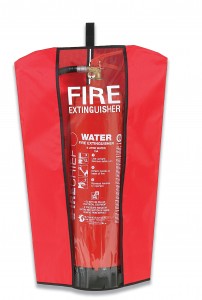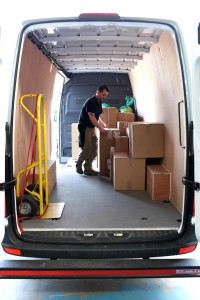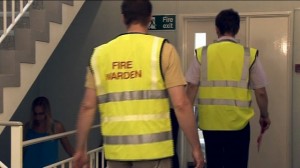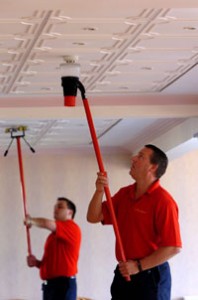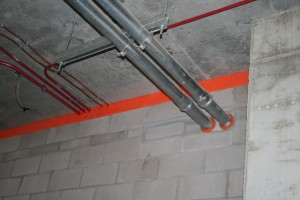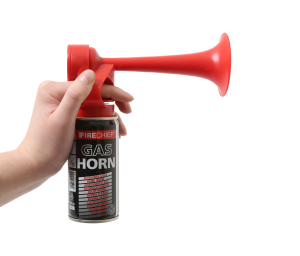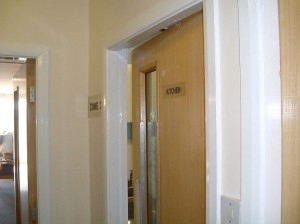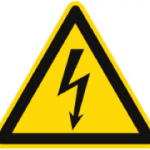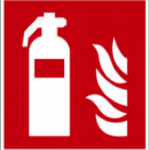With the winter weather approaching now is the time to ensure that your fire extinguishers are well protected from the elements.
Firechief Extinguisher Cabinets are ideal as they are totally weatherproof and extremely durable having been designed to withstand the rigours of the most harsh environments - including construction sites and HGVs.
The cabinets are available in four sizes - Small (to take a 6kg extinguisher), Medium (to take a 9kg extinguisher), Large (to fit a 12kg extinguisher or a 5kg CO2 extinguisher) and a double extinguisher capacity cabinet which will accommodated either two 6kg or two 9kg extinguishers.
All the Firechief cabinets are supplied with extinguisher retaining straps and the double cabinet is available with a keylock and can also be supplied with an alarm.
Life is precious and property and assets matter, so at Fire Depot we make it our mission to provide quality, approved fire protection equipment and to share fire safety advice and fire equipment recommendations. Visit www.firedepot.co.uk for more fire safety product information or call us on 0330 999 2233 to speak to our friendly team of experts.
[related_products is_auto_added="1"]
With the winter weather approaching now is the time to ensure that your fire extinguishers are well protected from the elements. Firechief Extinguisher Cabinets are ideal as they are totally weatherproof and extremely […]
This week (25 September to 1 October) is Fire Door Safety Week, which aims to raise awareness of the critical role of fire doors in every commercial, public and multiple occupancy building.
The initiative was started by the British Woodworking Federation, the BWF-CERTIFIRE Fire Door Scheme and the UK’s Fire Door Inspection Scheme (FDIS) to draw attention to specific issues such as poor installation and maintenance and encourage building owners and users to check the operation and condition of their fire doors and to report those that aren’t satisfactory.
Approximately 3 million new fire doors are bought and installed every year in the UK, the vast majority made from timber. Fire doors are often the first line of defence in a fire and their correct specification, maintenance and management can be the difference between life and death for building occupants. However, they remain a significant area of neglect, often the first thing to be downgraded on a specification and mismanaged throughout their service life, propped open, damaged and badly maintained.
Fire Door Safety Week seeks to educate property owners and users to understand the correct specification, supply, installation, operation, inspection and maintenance of fire doors. The campaign has lots of excellent and informative material, some of which we have been sharing on social media throughout the week:
1. Five Most Common Fire Door Faults infographic: http://firedoorsafetyweek.co.uk/wp-content/uploads/5_Most_Common_Fire_Door_Faults.pdf
2. How Safe Are Your Fire Doors? video: https://youtu.be/nbX1wXeEFWU?list=UUDvQ03hFkpxSFx-kb5oIrXA
3. Five Step Fire Door Check infographic: http://firedoorsafetyweek.co.uk/wp-content/uploads/5529_FDSW-Infographic.pdf
4. One minute video showing a simple 5 Step Fire Door Check that anyone can do: https://youtu.be/PBSUfJrSOy4
5. Fire Door Myths infographic http://firedoorsafetyweek.co.uk/wp-content/uploads/Fire-Door-Myths.pdf
For further information on the Fire Door Safety Week campaign, visit www.firedoorsafetyweek.co.uk. You can also read our previous blog posts on the importance of fire doors - Part One - Better Safe Than Sorry and Part Two - 5 Steps to Safety
Life is precious and property and assets matter. For help and advice on all fire protection and safety products, please contact the Fire Depot team on 0330 999 2233, email us at sales@firedepot.co.uk or visit www.firedepot.co.uk to see our range of fire safety products.[related_products is_auto_added="1"]
This week (25 September to 1 October) is Fire Door Safety Week, which aims to raise awareness of the critical role of fire doors in every commercial, public and multiple […]
If you are in the business of supplying fire safety equipment, then the team here at Fire Depot is right behind you! Here are our ‘must have’ tools of the trade to help you provide a super-professional service which will keep your customer’s fire extinguishers in tip top condition and make your business stand out from the crowd!
Firechief Extinguisher Cleaning Fluid is an extremely useful ‘must have’ in your engineer's toolbox. The chemical attacks dirt making the cleaning process much faster and leaves a shiny finish and light scent to really freshen up the extinguisher.
We recommend using the cleaning fluid with our pack of 5 large 40cm x 40cm Microfibre Cleaning Cloths – another ‘must have’ for your toolkit!
Fire Extinguisher Sterilising Tablets are a proven and cost-effective way of maintaining odour-free water in fire extinguishers. Used mainly in water extinguishers, they can be added to the water in the extinguisher and will protect against bacteria, fungi, viruses and spores.
Labels. We have a range of servicing labels including Paper Extinguisher Service Labels, Tie on Extinguisher Service Tags, 'Condemned' labels for extinguishers that have been found to be unfit for operation, and ‘Frost free’ and ‘Do not hold’ CO2 horn labels.
Gauge Dots are available in blue, clear, green, orange, red and yellow vinyl with black print and have the number of the year printed on them to show when the extinguisher was last serviced.
The Firechief A4 Fire Log Book covers all aspects of fire safety to allow records to be kept up to date and is fully compliant with requirements of recent legislation.
If you require spare parts for your fire extinguishers, Fire Depot is the place to come! We have horns, cartridges, transport brackets, refill packs for ABC powder, AFFF foam, antifreeze, and wet chemical concentrate, fire extinguisher Pull Tight seals, Plastic Pin and OK Indicators and replacement valves – and that’s just for starters!
Life is precious and property and assets matter, so at Fire Depot we make it our mission to provide quality, approved fire protection equipment and to share fire safety advice and fire equipment recommendations. Visit www.firedepot.co.uk to view our full range of fire safety products or call us on 0330 999 2233 to speak to our friendly team of experts.[related_products is_auto_added="1"]
If you are in the business of supplying fire safety equipment, then the team here at Fire Depot is right behind you! Here are our ‘must have’ tools of the trade to […]
For many people a fire extinguisher is probably a bit like wallpaper, it’s there but you don’t really notice it. But if you suddenly needed to use it, it’s vital that it is in good working order.
The maintenance of fire extinguishers by a qualified professional is essential and it is the responsibility of a building’s ‘Responsible Person’ to ensure that checks are carried out monthly and to arrange for annual maintenance. With proper servicing and maintenance, fire extinguishers should last for between 5 and 15 years before they need replacing.
So, what exactly should you be checking? During monthly checks make sure that the fire extinguishers have no visible signs of damage or wear and tear, that they are sited where they should be and can be easily seen if needed. Also, ensure that the needle of the extinguisher’s pressure gauge is in the green zone and that the correct labelling and operating instructions are on the extinguisher.
You should also check that any anti-tamper/anti-theft seals (if you have them) are present and have not been broken. These are an effective way to stop vandalism, misuse or theft of fire extinguishers as when the extinguisher is removed from its normal position, an alarm will sound. You could also consider using extinguisher covers. These come in different sizes and are a low-cost way of protecting your extinguishers.
If you discover that an extinguisher is damaged in any way, for example the hose or nozzle is cracked, ripped or blocked, the handle is wobbly or broken, the pressure gauge needle is outside of the green zone, the locking pin is missing or anti-tamper/theft seal is broken or labelling or operating instructions are missing, ask a fire safety professional to service, repair or replace the extinguisher without delay.
You should keep a record of each inspection made in a fire safety logbook and all fire extinguishers should be labelled with details of their last inspection; if not, you should get the extinguisher checked by a professional.
Life is precious and property and assets matter, so at Fire Depot we make it our mission to provide quality, approved fire protection equipment and to share fire safety advice and fire equipment recommendations. Visit www.firedepot.co.uk for more fire safety product information or call us on 0330 999 2233 to speak to our friendly team of experts.[related_products is_auto_added="1"]
For many people a fire extinguisher is probably a bit like wallpaper, it’s there but you don’t really notice it. But if you suddenly needed to use it, it’s vital […]
Fire protection equipment is now readily available online as well as from catalogues and while there is no right or wrong way to source your fire protection equipment there are some useful guidelines which will help ensure that your purchasing decisions make sound sense and protect you and your business should things go wrong.
A key requirement no matter where you purchase from, is to buy products – and especially fire extinguishers - that comply with a third-party accreditation such as the British Standards Kitemark and the internationally recognised BRE LPCB Mark. It is worth noting that the CE Mark on its own - although a good thing to have - is not a guarantee of product quality where fire safety products are concerned, so ensure that what you are buying has least one of the above fire safety standard marks as well.
On the face of it, some of the prices shown online and in catalogues may seem to offer good value for money but when buying a product like a fire extinguisher for example, you need to be aware of potential hidden costs such as the following:
Customer service & product knowledge
If you know exactly which type of extinguisher/s you require, you may not need much in the way of customer service support at the point of sale. However, some online providers state that their products may be substituted for a similar product, so how would you know if this has happened? Or perhaps the site is out of stock of the extinguisher – would you be confident in taking the suggested alternative product or in finding a like for like product yourself on the site or in the catalogue?
Liability insurance
Have you checked that the internet or catalogue supplier has liability and efficacy insurance? In other words, who will you claim from if the product is faulty or doesn’t work?
Warranties
If you are buying a fire extinguisher, does it come with a five-year product guarantee? This is worth checking as the warranty may only be for 12 months from date of purchase.
Delivery and returns
What are the delivery charges and what is the returns policy? It’s expensive and time consuming to return extinguishers to the supplier if you order the wrong equipment!
Damage in transit
With a fire extinguisher, there is always the potential for damage in transit if it is not packaged correctly. In this case, you will have the inconvenience of packing and returning the damaged extinguisher/s possibly at your own cost.
Conclusion
It is unfortunate but true that the real cost of buying fire protection equipment from a non-proven source will only become known when the equipment is needed in a real fire situation. In the event of a fire, both the Fire Authorities and the insurance company will require proof of your competency as the supplier and maintainer of the firefighting equipment and if you are unable to show that you have at least met the recognised standard codes of practice for the provision of firefighting equipment, this could mean you will be prosecuted.
Purchasing third party accredited and BAFE approved fire protection equipment from a proven source with appropriate liability and efficacy is the only way to ensure you will be purchasing a quality product and therefore protecting both your own and your customer’s business.
Life is precious and property and assets matter, so at Fire Depot we make it our mission to provide quality, approved fire protection products at competitive prices with 24 hour guaranteed delivery. We have achieved ISO9001 approval every year since 1999 and hold a licence for the prestigious British Kite Mark and the internationally respected BRE LPCB mark
For more fire safety product information, fire safety advice and fire equipment recommendations, visit www.firedepot.co.uk or call us on 0330 999 2233 to speak to our friendly team of experts.
Sources: The UK Fire Association, The Fire Industry Association (FIA)[related_products is_auto_added="1"]
Fire protection equipment is now readily available online as well as from catalogues and while there is no right or wrong way to source your fire protection equipment there are […]
Fire Wardens play an essential role in the management of fire safety within the workplace but what exactly is expected of you should you be appointed as a Warden? And how can employers ensure that their workplace’s Warden is trained to carry out their duties safely and proficiently?
Under the Fire Safety Order 2005 the person with overall responsibility for fire safety in the workplace is known as the ‘Responsible Person’. However, part of the Responsible Person’s role is to appoint one or more competent persons – known as a Fire Warden or a Fire Marshal - to assist with general fire safety and in the event of an evacuation of the building.
The role of a Fire Warden
The role of a Fire Warden is to be both proactive and reactive in fire safety.
The proactive part of the role includes regularly carrying out and reviewing risk assessments, actively monitoring protection measures and equipment, ensuring firefighting equipment and fire doors are in good working condition, and checking that all means of escape remain unobstructed. The Warden should also ensure that people in the building are aware of the fire and evacuation procedures – and the means of raising the alarm – as well as undertaking the induction of new employees to the fire safety and evacuation procedures.
However, a Fire Warden should also be able to react by implementing the fire safety plans when emergencies occur, ensuring that the building is cleared and helping employees, visitors and any people with disabilities get to places of safety if a fire breaks out. The Warden must also check that the alarm has been raised by somebody and check that any machinery has been made safe before going to the relevant assembly point to carry out the roll call procedure. The Fire Warden is also responsible for ensuring that no one re-enters the building until it has been deemed safe to do so.
Fire safety training for Fire Wardens
It is up to the Responsible Person - an employer, landlord or building owner - to ensure that the Fire Warden is appropriately trained and competent to carry out the role. As a competent person, they may also be given practical training in the use of portable fire extinguishers to fight the fire with if is safe to do so and company policy allows.
Life is precious and property and assets matter. For help and advice on all fire protection and safety products, please contact the Fire Depot team on 0330 999 2233, email us at sales@firedepot.co.uk or visit www.firedepot.co.uk to see our range of fire safety products.
[related_products is_auto_added="1"]
Fire Wardens play an essential role in the management of fire safety within the workplace but what exactly is expected of you should you be appointed as a Warden? And […]
Recent events have clearly highlighted the responsibilities of a building’s ‘Responsible Person’ in terms of fire regulations and part of this responsibility includes the requirement to conduct a fire risk assessment. However, apart from stating that an assessment must be carried out, the Fire Safety Regulations of 2005 contain no set standards as to how fire safety assessments should be completed and nor is there any requirement to use a specialist fire assessor.
The Fire Industry Association (FIA) recommends a robust fire risk assessment, carried out by a competent individual, to ensure that all parts of the building have been accounted for and the risks have been considered and planned for. The risk assessment will highlight not only what fire protection equipment is needed but also where. Alternatively, a business’s ‘Responsible person’ is also deemed to be competent to carry out their own fire risk assessment under the 2005 Fire Safety Order and in this case, the self-assessment will need to consider every area of fire detection, containment and control.
So, if you are responsible for fire safety in a building, what are the implications of undertaking the fire risk assessment yourself?
It may sound obvious, but a fair level of competence is required, for example:
- You need to be able to identify hazards
- You need to be able to identify building issues
- You need to be able to identify people at risk such as lone workers, young people and those with mobility issues
- You need the knowledge to evaluate, remove, reduce and protect from risk
- You will need to formally record your assessment/s and put a plan in place to mitigate risk
- You will need to carry out training of your building’s users
- You can find a list of other items you will need to consider in one of our previous blog posts here
The biggest benefit of carrying out a DIY fire risk assessment is that there is no cost implication, only your time is involved and you can carry it out at a time most convenient to you. You also know your building better than anyone and can own the situation regarding changes that need to be made as a result of risks being identified.
On the other hand, the potential risks of undertaking a DIY assessment could be that you may inadvertently turn a blind eye to issues or perhaps not be impartial enough through concern that you might upset colleagues, or you may simply fail to recognize a risk. You will also need to undertake initial and ongoing training in order to keep up to date with regulations and best practice, etc. Suitable assessor training information is available from both The Institution of Fire Engineers (IFC) and The Fire Protection Association (FPA).
A specialist assessor on the other hand will have been continuously trained and will most certainly be impartial. They can also be relied upon to provide ‘compliant’ risk assessments and will bring new ideas and different views
However, having a thorough, comprehensive fire risk assessment done by a competent fire risk assessor is likely to be costly. But cheap is certainly not the best option in this situation so beware of finding an assessor through a Google Search for example, who says they can get you fully compliant in a few days, will beat any other quote or are quoting just £99 to complete the whole thing as this is simply not possible if they are undertaking a comprehensive fire risk assessment!
Whether you choose to take the DIY approach or employ a specialist fire risk assessor, the most important thing to bear in mind is that firstly, no amount of training can replace experience and secondly, as the ‘Responsible Person’ you retain the responsibility for ensuring the adequacy of that assessment. If employing a specialist to undertake your fire risk assessment, you should make reasonable checks to ensure that they are competent to do the job properly. Help is available from the Fire Risk Assessment Competency Council who have criteria for assessing competency of fire risk assessors or http://www.london-fire.gov.uk/Documents/guidance-choosing-a-competent-fire-risk-assessor.pdf which also provides guidance on choosing a competent fire assessor.
Life is precious and property and assets matter, so at Fire Depot we make it our mission to provide quality, approved fire protection equipment and to share fire safety advice and fire equipment recommendations. Visit www.firedepot.co.uk for more fire safety product information or call us on 0330 999 2233 to speak to our friendly team of experts.
[related_products is_auto_added="1"]
Recent events have clearly highlighted the responsibilities of a building’s ‘Responsible Person’ in terms of fire regulations and part of this responsibility includes the requirement to conduct a fire risk […]
A number of our recent blog posts have focused on the topic of passive fire protection such as fire doors, but in this post we turn our attention to active fire protection and the importance of having a fully functioning, fully tested and maintained fire alarm system.
Firstly, its worth saying that all fire alarm equipment - including the smoke and heat detectors, the sounders, beacons and relays - should be installed and tested by a competent person such as a BAFE qualified engineer
However, it is also very important that all components of the fire alarm - including all the detectors - are fully tested regularly and certainly at least once a year. Dust can build up on detectors as a result of air conditioning outlets or building work for example and in fact, this is one of the five major causes of fire false alarms according to fire brigades.
At Fire Depot we stock the Testifier range of testers to ensure that detector servicing is completed efficiently and safely. The Testifier alarm testing equipment is uniquely capable of producing smoke, heat and CO stimuli. The tools offer fast and cost-effective compliance with test standards (BS 5839) and address RRFSO legislative issues concerning proof of competence.
Testifire testing equipment can also reduce the time spent on fire alarm testing by up to 66%. Some ways it does this are:
• A dramatic reduction in reset times through use of clearing cycle
• Using the latest technology stimuli generation and delivery
• The replacement of multiple tools with a single tester
• Using combined stimuli deployment on multi-sensor detectors
• Faster testing of higher temperature detectors with hi-heat mode
If you are an employer, a building owner, a landlord, an occupier or anyone else with control of a premises - such as a facilities or building manager or a managing agent - you are responsible for fire safety in a business and as such will need to ensure you know the answers to the following questions:
• Was the fire alarm system designed by a person qualified to design these systems?
• Was the fire alarm system installed correctly?
• Do you have documentation in the form of certificates for the Design, Installation, Commissioning and Handover of the system and were the certificates issued by reputable companies?
• Is the system regularly maintained and is there evidence available to support this, such as the fire alarm log book?
Life is precious and property and assets matter so at Fire Depot we make it our mission to provide quality, approved fire protection equipment and to share fire safety advice and fire equipment recommendations. You can view the full range of the Testifire products in more detail on the website and for help and advice on all fire protection and safety products, please contact the Fire Depot team on 0330 999 2233 or email us at sales@firedepot.co.uk.[related_products is_auto_added="1"]
A number of our recent blog posts have focused on the topic of passive fire protection such as fire doors, but in this post we turn our attention to active […]
In our previous blog posts on passive fire protection we covered the importance of fire doors and fire door furniture in passive fire protection and saving lives. However, passive fire safety is about much more than just fire doors, as to ensure that rooms are effectively compartmentalized and will provide a period of protection from smoke and flames, other passive fire protection measures must also be in place for the following:
• Walls and partitions
• Suspended ceilings
• Ductwork
• Air transfer grills
• Glazing
• Shutters
• Firefighting shafts
If control measures are in place for each of these and they are routinely and regularly inspected and maintained (this is the responsibility of the building’s Responsible Person) this should mean that:
• The building’s structure is protected by minimizing the fire spread
• The premises can be compartmentalised into fire/smoke tight areas
• The means of escape is protected for the building’s occupants
• Fire fighters have the facilities they need to tackle the blaze effectively
• Areas of financial/strategic value such as an IT server room or a safe are protected
• Areas of high fire risk can be surrounded (as may be required by an insurance policy)
• The potential for external fire spread can be limited.
According to the Fire Protection Association, unprotected vertical and horizontal openings around pipework and ducts, etc are one of the major contributing causes of the rapid spread of smoke and fire in a building. These openings allow the smoke to spread beyond the room with the fire and into other rooms or floors of the building.
Fire stopping products such as fire collars, putties and fire sealants supplied by companies like Ventro and Quelfire can potentially make the difference between a fire spreading, and a fire stopping. Fire dampers and smoke dampers can also be used in heating, ventilation and air conditioning systems to prevent the spread of fire or smoke inside the ductwork.
However, any passive fire protection is only as good as its weakest point so if the protection has been incorrectly installed by a tradesman or damage has been done by a subsequent tradesman who doesn’t make good and restore the seal, the protection simply won’t be effective if a fire breaks out. Therefore, routine and regular inspection and maintenance isn’t just important, it’s potentially lifesaving!
Life is precious and property and assets matter. For help and advice on all fire protection and safety products, please contact the Fire Depot team on 0330 999 2233, email us at sales@firedepot.co.uk or visit www.firedepot.co.uk to see our range of fire safety products.
[related_products is_auto_added="1"]
In our previous blog posts on passive fire protection we covered the importance of fire doors and fire door furniture in passive fire protection and saving lives. However, passive fire […]
Summer is here and with it the annual school sports day - which is where Firechief Gas Horns come into their own as they are perfect for starting races!
Our Gas Horns also featured very prominently at the recent successful Guinness World Record attempt for the longest rugby match. As part of our sponsorship of this event, Fire Depot donated several boxes of gas horns for supporters to use to encourage the players, and to celebrate the end of the 31 hours of play and the achievement of the World Record - and they certainly could be heard!
On a more serious note, Gas Horns can play an important role in fire safety. They are a low cost solution to providing temporary fire alarm cover, for example during the installation or maintenance of a buildings fire alarm or on a construction site to alert construction workers in case of emergency or even as a fire alarm at temporary event such as a summer fete or festival. They can also be used during fire drills and evacuations and do come as part of the equipment provided in both the Basic and Premium Fire Warden’s kits supplied by Fire Depot.
With a 110dB output, the horn delivers a high pitch sound that is audible at distances of up to 1500m away and so is also suitable for use in fog, on golf courses or even on a boat to signal a hazard warning. And what’s more, the Firechief Gas Horn uses ozone friendly gas and complies with EU517/2014 thus ensuring that no harm is done to the environment.
Life is precious and property and assets matter. For help and advice on all fire protection and safety products, please contact the Fire Depot team on 0330 999 2233, email us at sales@firedepot.co.uk or visit www.firedepot.co.uk to see our range of fire safety products.[related_products is_auto_added="1"]
Summer is here and with it the annual school sports day – which is where Firechief Gas Horns come into their own as they are perfect for starting races! Our […]
In the first part of our Passive Fire Protection blog ‘Fire Doors – Better Safe than Sorry’, we talked about the critical role that fire doors play in fire safety and saving lives.
But while the fire door itself has an important job to do in the event of a fire, it will only be effective if all the components of the fire door, and not just the door itself, are up to standard and can provide a fire and smoke tight compartment.
A recent survey of fire door inspections revealed that 61% of the doors inspected had issues with fire/smoke seals, 25% had problems with hinges and 1 in 6 had problems with the door leaf, so making sure your fire doors and all the components are 100% compliant is crucial to their performance in case of a fire.
Whether you are fitting new fire doors or undertaking routine inspection and maintenance, the key things to check are as follows:
1. You have an accredited fire door together with CE marked and accredited door furniture (hinges, latches, screws etc) and mechanisms like closers.
It is worth noting that not all doors are compatible with all components, and not every door fits every door frame, so check the manufacturer’s instructions and fire certificate and make sure you have the right door furniture and frame to work with your fire door. If not, it will invalidate any fire certification and you cannot be sure that the door will operate safely.
2. The door fits the door frame and there are appropriate gaps and either intumescent strips or intumescent smoke seals around the frame and door.
For your door to work well on a day to day basis it will need to have a consistent and equal gap around the door, usually advised by the manufacturer to be 3-4mm. You can measure this accurately by using a gap tester. These are available free from many sources such as BWF-CERTIFIRE.
When there is a fire however, it is important that there is no gap between the door and the frame for the fire or smoke to spread through. To achieve this, you need to fill the gap with a fire stopping material, like intumescent strips or combined intumescent smoke seals, which expand as a reaction to heat. This should ensure that fire will not get through any gaps into the rest of the building for the duration of the fire door’s guarantee time, so for example a fire door rated FD30 equals 30 minutes and a fire door rated FD60 equals 60 minutes (this door is used in most public buildings such as schools, hotels and offices).
3. The door must open and close properly, ensuring the door and door frame are positioned appropriately.
The mechanism used to close the door must be CE marked and approved by an accrediting body. It also needs to be the correct mechanism for the weight of the internal fire door so can it can open and close correctly, close in controlled way and onto a latch, or close onto door stop if there is not a latch.
4. Check the supporting construction around the door. Normally the wall (whether brick, block, masonry, timber or steel stud) should provide at least 30 minutes’ fire resistance but avoid having glazed panels above a fire door as they will render a fire door unfit for purpose.
5. One final point to consider. Passive fire protection - such as fire doors - is quite often installed by tradespeople outside of the fire industry and if installed incorrectly means the protection will not work in case of a fire in terms of compartmentalization. Also, be aware that accidental damage to fire doors and the areas around them may be done by other tradesmen who then don’t make good and restore the seal.
Fire Door Safety Week is taking place from 25 September to 1 October. For further information and for hints and tips on keeping your fire doors compliant, visit the website.
Life is precious and property and assets matter. For help and advice on all fire protection and safety products, please contact the Fire Depot team on 0330 999 2233, email us at sales@firedepot.co.uk or visit www.firedepot.co.uk to see our range of fire safety products.[related_products is_auto_added="1"]
In the first part of our Passive Fire Protection blog ‘Fire Doors – Better Safe than Sorry’, we talked about the critical role that fire doors play in fire safety […]
As we all know, fires can potentially strike at any time, in any place and perhaps more than any other hazard, they create a staggering variety of problems - not least of which is getting people out of a building safely.
One of the most important aspects of fire safety therefore is the signage. Fire safety signs are designed to offer guidance in times of crisis and exit signage is hugely important in public environments so that people can escape effectively in an emergency.
Standardisation of fire safety signs
Over the years many signs had been developed throughout the world, leading to a plethora of different symbols to visually explain directions. However, given the massive migration of people within the EU, a lack of standardisation can potentially lead to confusion and increase the likelihood of accidents. More and more people now live and/or work in countries in which the official language may not be their native tongue, so a more common and understandable method of relaying important safety messages is more important than ever before.
The implementation of ISO 7010 in January 2013, brought an international standard for consistent safety sign regulation across Europe, covering accident prevention, fire protection, health hazard information and emergency evacuation. Its aim was to regularise signage throughout the EU by using the same design hence minimising the risk of potentially dangerous situations and to provide a standardised, easy-to-understand message with graphics as well as words when required.
Under ISO 7010 there are specific requirements regarding the shape, composition and colour of safety signs and any sign must contain a symbol or pictogram to clearly convey its message, independent of any written word(s). The standard requirements for each type of sign are shown below:
Types of Signs
Prohibitive Signs
These signs indicate actions or equipment which are prohibited and are displayed on a circular sign with black pictogram on white background and red border and diagonal line. 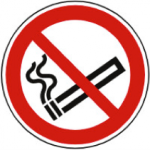
Warning Signs
These signs give warning of potential risks and are displayed on a triangular sign with black pictogram on yellow background with black border.
Mandatory Signs
These type of signs show a course of action which must be taken and are displayed on a circular sign with white pictogram on blue background.
Escape Routes and Safety Equipment Signs
These signs are either rectangular or square with a white pictogram on green background.
Fire Equipment
The location of firefighting equipment is shown on a square sign with white pictogram on a red background.
You can learn more about International Standards at The International Organisation for Standardisation (http://www.iso.org/iso/home.html)
Under the Fire Safety Order 2005 and health and safety legislation, the Responsible Person of a building has a duty to ensure safety signs are compliant with best practice i.e. BS EN ISO 7010. They are required by law to identify hazards and mark the location of emergency equipment, means of escape, and safety appliances with appropriate signs.
Life is precious and property and assets matter. Our full range of Fire Safety Signs can be viewed on the website and for help and advice on all fire protection and safety products, please contact the Fire Depot team on 0330 999 2233 or email us at sales@firedepot.co.uk.
[related_products is_auto_added="1"]
As we all know, fires can potentially strike at any time, in any place and perhaps more than any other hazard, they create a staggering variety of problems – not […]
